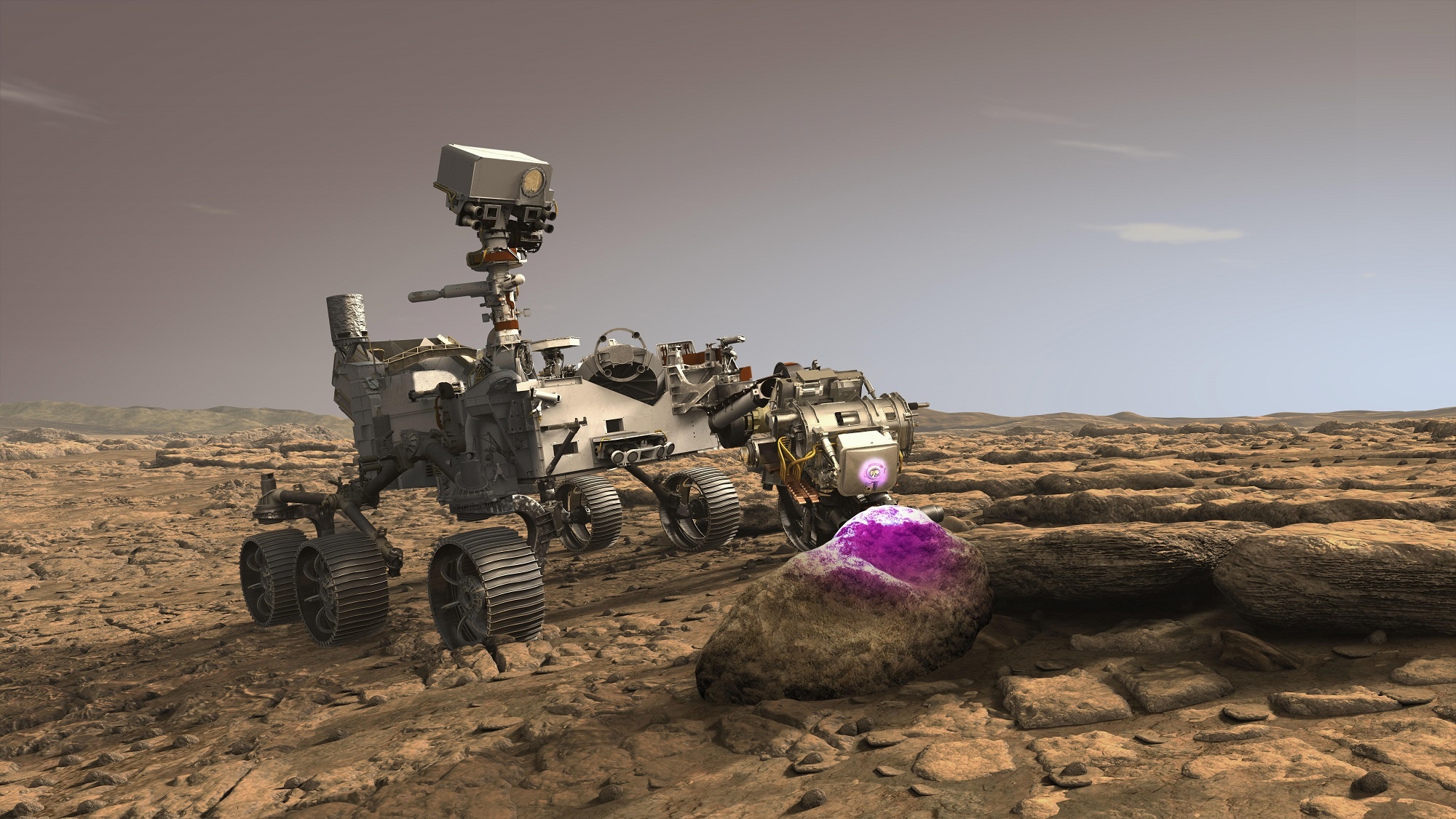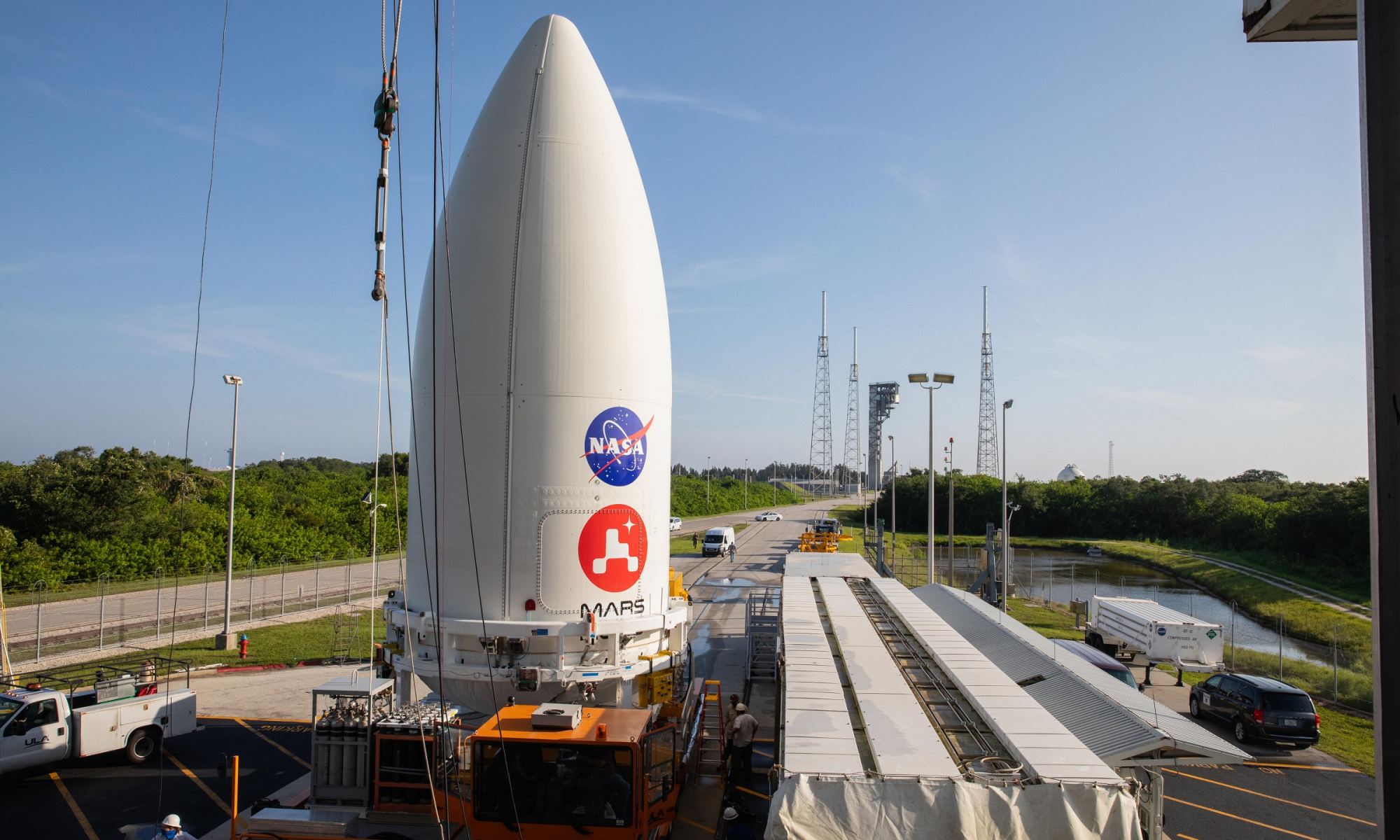When it comes to Mars exploration, NASA has more success than any other agency. This week, they’ll attempt to land another sophisticated rover on the Martian surface to continue the search for evidence of ancient life. The Mars Perseverance rover will land on Mars on Thursday, February 18th, and it’s bringing some very ambitious technologies with it.
Continue reading “NASA’s Perseverance Rover: The Most Ambitious Space Mission Ever?”Water Shaped Features on Mars Much Earlier Than Previously Believed
In two days (on Thursday, Feb. 18th, 2021), NASA’s Perseverance rover will land on Mars. As the latest robotic mission in the Mars Exploration Program (MEP), Perseverance will follow in the footsteps of its sister mission, Curiosity. Just in time for its arrival, research conducted at the Southwest Research Institute (SwRI) has shown that Mars’ surface was shaped by flowing water several million years earlier than previously thought.
Continue reading “Water Shaped Features on Mars Much Earlier Than Previously Believed”Astronauts Will be Able to Extract Fuel, Air, and Water From Martian Brine
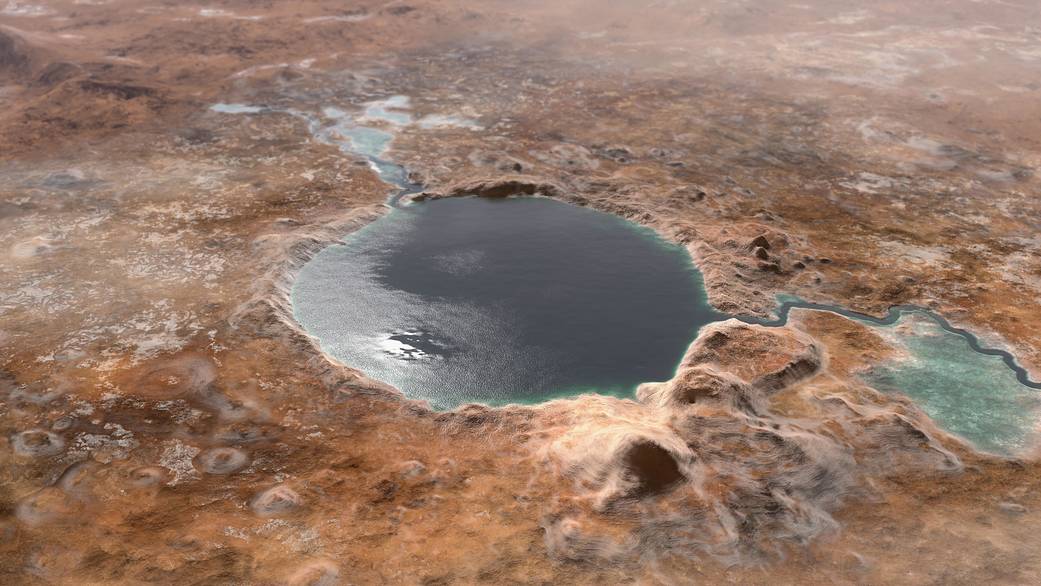
A little over a decade from now, NASA plans to send astronauts to Mars for the first time. This mission will build on decades of robotic exploration, collect samples from the surface, and return them to Earth for analysis. Given the immense distance involved, any operations on the Martian surface will need to be as self-sufficient as possible, which means sourcing whatever they can locally.
This includes using the local water to create oxygen gas, drinking water, and rocket fuel, which represents a challenge considering that any liquid water is likely to be briny. Luckily, a team of researchers from the McKelvey School of Engineering at Washington University at St. Louis (WUSTL) has created a new type of electrolysis system that can convert briny water into usable products while also being compact and lightweight.
Continue reading “Astronauts Will be Able to Extract Fuel, Air, and Water From Martian Brine”This is What Perseverance’s Landing Site Looked Like Billions of Years Ago. See Why it’s Such a Compelling Target?

Today is a milestone in NASA’s Perseverance mission to Mars. At 1:40 pm Pacific time today, the rover will have traveled 235.4 million km (146.3 million miles). That means the spacecraft is halfway to Mars and its rendezvous with Jezero Crater. The spacecraft isn’t traveling in a straight line, and the planets are moving, so it’s not equidistant to both planets.
“Although we’re halfway into the distance we need to travel to Mars, the rover is not halfway between the two worlds,” Kangas explained. “In straight-line distance, Earth is 26.6 million miles [42.7 million kilometers] behind Perseverance and Mars is 17.9 million miles [28.8 million kilometers] in front.”
But today’s still a good time to take another look at Jezero Crater, and why NASA chose it as the mission’s target.
Continue reading “This is What Perseverance’s Landing Site Looked Like Billions of Years Ago. See Why it’s Such a Compelling Target?”Perseverance Will be Scanning Inside Rocks for Fossils on Mars
On February 18th, 2021, NASA’s Perseverance rover will reach Mars, make a harrowing descent through the planet’s atmosphere, and put down in the Jezero Crater. Like it’s sister-rover, Curiosity, this robotic explorer will explore a region that once supported flowing water and poke around with an advanced suite of scientific instruments for signs of microscopic life that may have existed there billions of years ago.
This is no small feat, which is why the rover will be bringing along its Planetary Instrument for X-ray Lithochemistry (PIXL). This precision instrument is located at the end of its 2-meter (7 foot) long arm and is powered by artificial intelligence (AI). The PIXL will play a pivotal role in Perseverance‘s mission, using a coring drill to obtain samples that will be cached on the surface that will be returned to Earth by a future mission.
Read morePerseverance Has Been Put Inside its Atlas V Rocket
This summer – between July 30th and August 15th – NASA’s Perseverance rover will begin its long journey for Mars. Once it arrives (by February of 2021), it will join its sister mission, the Curiosity rover, and a slew of other robotic landers and orbiters that are busy characterizing the atmosphere and surface of the Red Planet. Ultimately, the goal of Perseverance is to determine if Mars once supported life (and maybe still does!)
Just last week (July 7th), the Perseverance rover and all the other elements of the Mars 2020 spacecraft were loaded aboard the United Launch Alliance (ULA) Atlas V rocket that will send it on its way. This included the aeroshell, cruise stage, and descent stage, which will be responsible for transporting the Perseverance rover during its six-month journey to Mars and depositing it on the surface.
Continue reading “Perseverance Has Been Put Inside its Atlas V Rocket”NASA’s Perseverance Rover is Going to Jezero Crater, Which is Looking Better and Better as a Place to Search for Evidence of Past Life on Mars
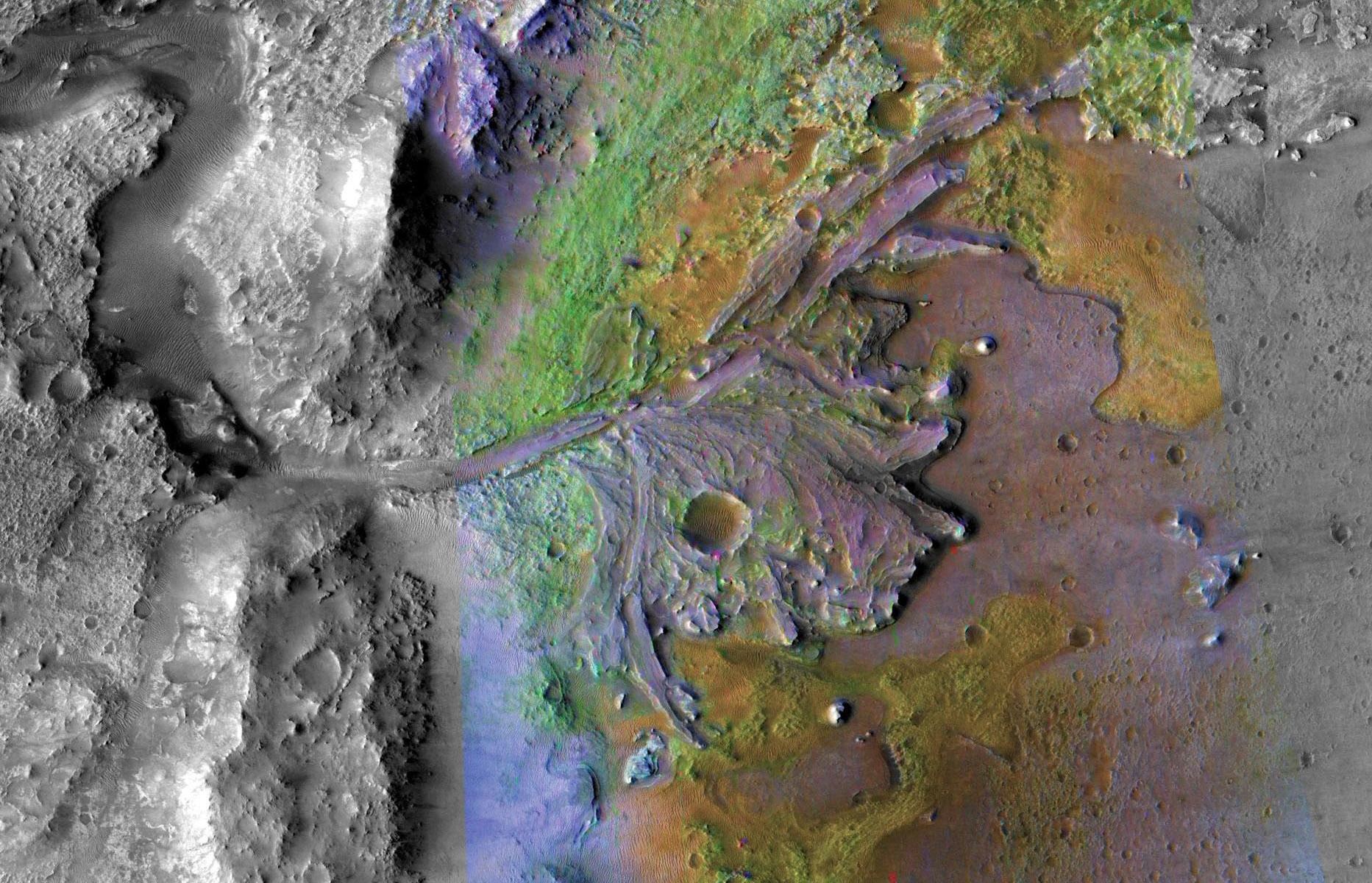
In 2018, NASA decided that the landing site for its Mars 2020 Perseverance rover would be the Jezero Crater. At the time, NASA said the Jezero Crater was one of the “oldest and most scientifically interesting landscapes Mars has to offer.” That assessment hasn’t changed; in fact it’s gotten stronger.
A new research paper says that the Jezero Crater was formed over time periods long enough to promote both habitability, and the preservation of evidence.
Continue reading “NASA’s Perseverance Rover is Going to Jezero Crater, Which is Looking Better and Better as a Place to Search for Evidence of Past Life on Mars”Mars 2020 Rover Gets its Helicopter Sidekick
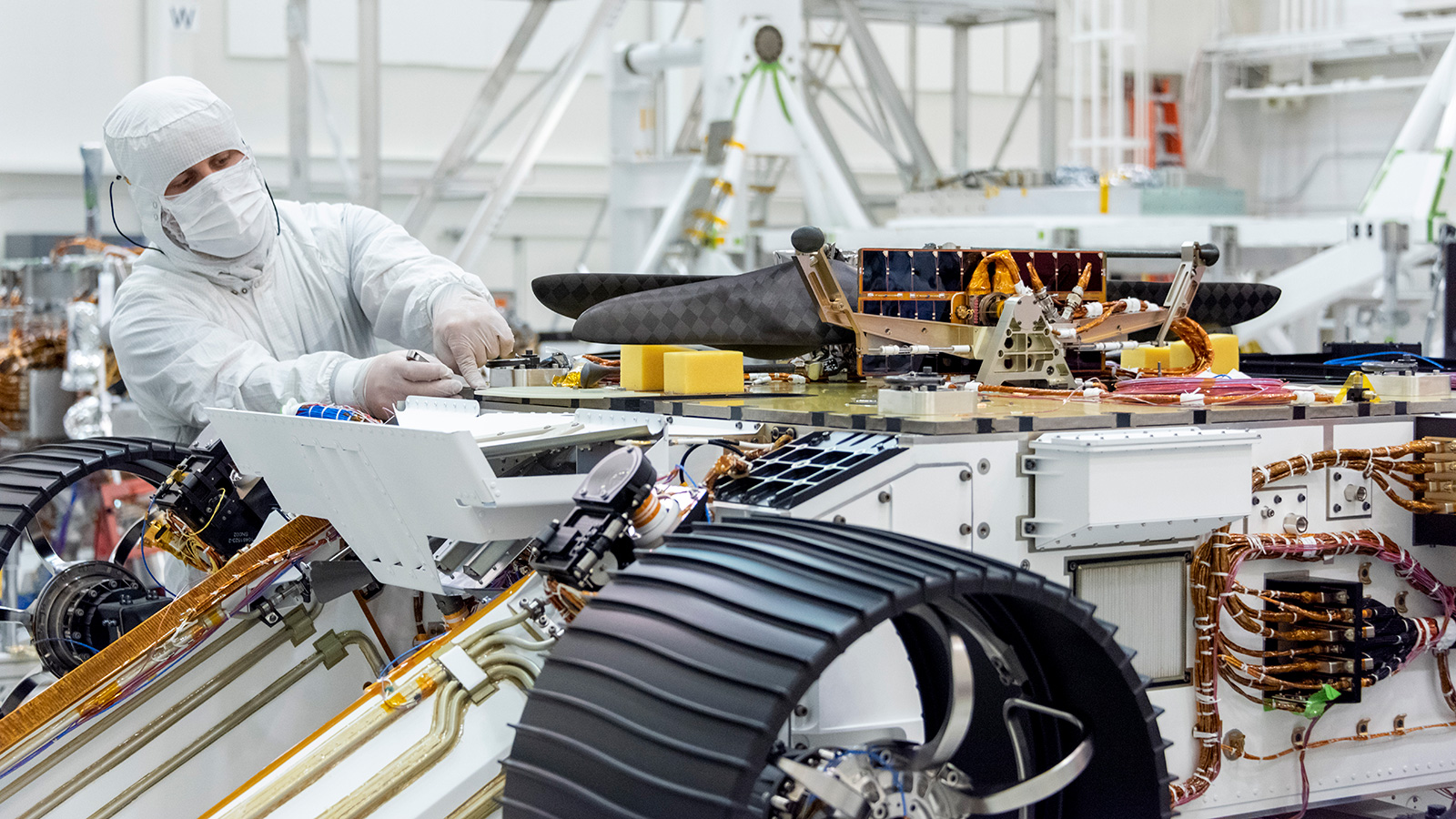
Work on the Mars 2020 Rover is heating up as the July/August 2020 launch date approaches. Mission engineers just attached the Mars Helicopter to the belly of the rover, where it will make the journey to Mars. Both the solar-powered helicopter and the Mars Helicopter Delivery System are now attached to the rover.
NASA’s Mars Helicopter will be the first aircraft to fly on another planet. The small rotor-craft only weighs 1.8 kg (4 lbs.) and is made of lightweight materials like carbon fiber and aluminum. It’s largely a technology demonstration mission, and is important to NASA. The overall mission for the Mars 2020 rover won’t depend on the helicopter, but NASA hopes to learn a lot about how to proceed with aircraft on future missions by putting the Mars helicopter through its paces on Mars.
Continue reading “Mars 2020 Rover Gets its Helicopter Sidekick”This is Where Mars 2020 Rover is Heading. From this Picture, I Think You Can Guess Why

Get used to hearing the name “Jezero Crater.” It’s the landing site for NASA’s Mars 2020 rover. The 2020 rover is slated to launch in July 2020, and will land at Jezero Crater in February, 2021.
It’s pretty easy to see why NASA chose Jezero Crater for the next rover in their Mars Exploration Program (MEP). MEP is NASA’s long-term plan to explore Mars robotically. It includes rovers like Spirit, Opportunity, and MSL, the InSight Lander, orbiting spacecraft, and soon the 2020 rover.
Continue reading “This is Where Mars 2020 Rover is Heading. From this Picture, I Think You Can Guess Why”Don’t Forget, Curiosity’s Sister Rover is Flying to Mars in 2020
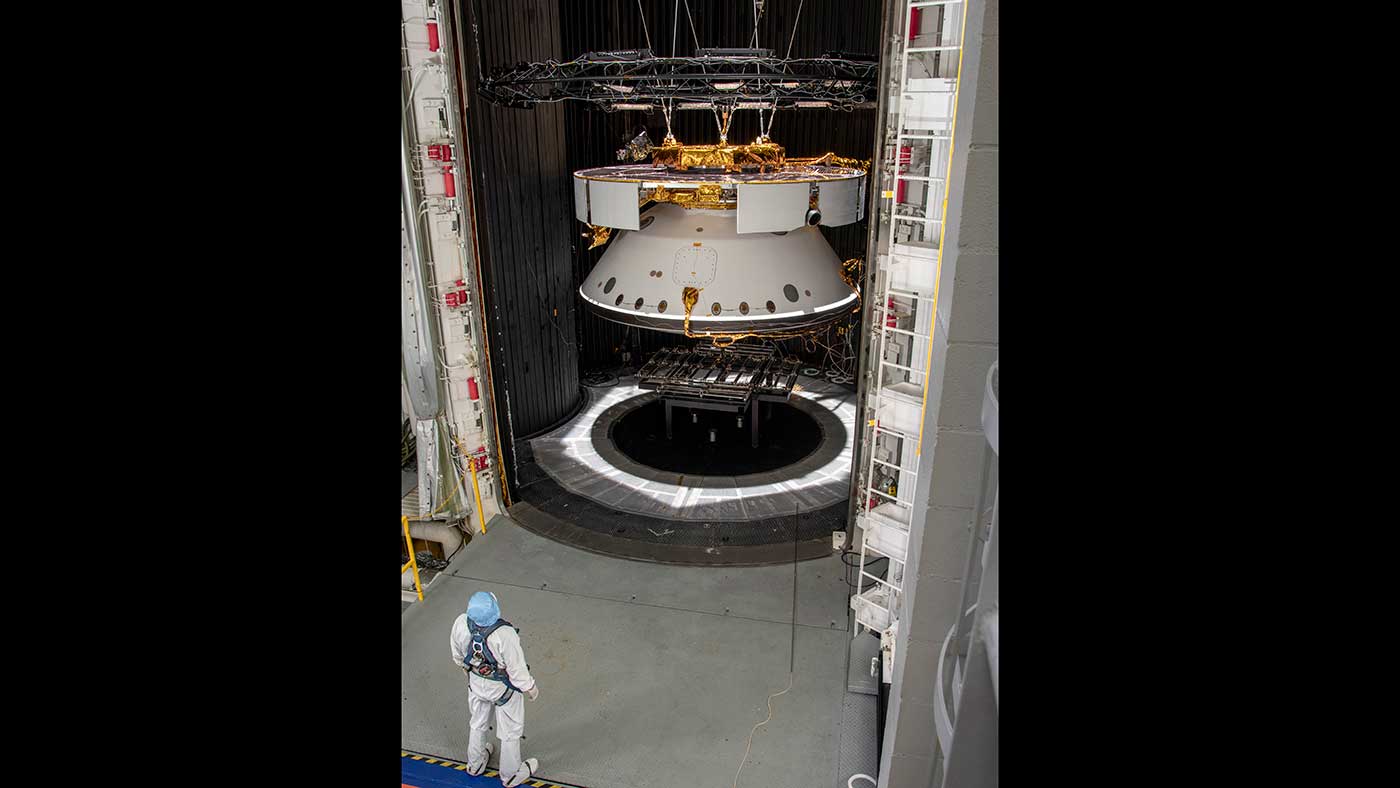
Next summer, NASA will be sending it’s Mars 2020 rover to the Red Planet. In addition to being the second rover to go as part of the Mars Exploration Program, it will be one of eight functioning missions exploring the atmosphere and surface of the planet. These include the recently-arrived InSight lander, the Curiosity rover – Mars 2020s sister-mission – and
the Opportunity rover (which NASA recently lost contact with and retired).
As the launch date gets closer and closer, NASA is busily making all the final preparations for this latest member of the Mars exploration team. In addition to selecting a name (which will be selected from an essay contest), this includes finalizing the spacecraft that will take the rover on its seven-month journey to Mars. Recently, NASA posted images of the spacecraft being inspected at NASA JPL’s Space Simulator Facility (SFF) in Pasadena, California.
Continue reading “Don’t Forget, Curiosity’s Sister Rover is Flying to Mars in 2020”

